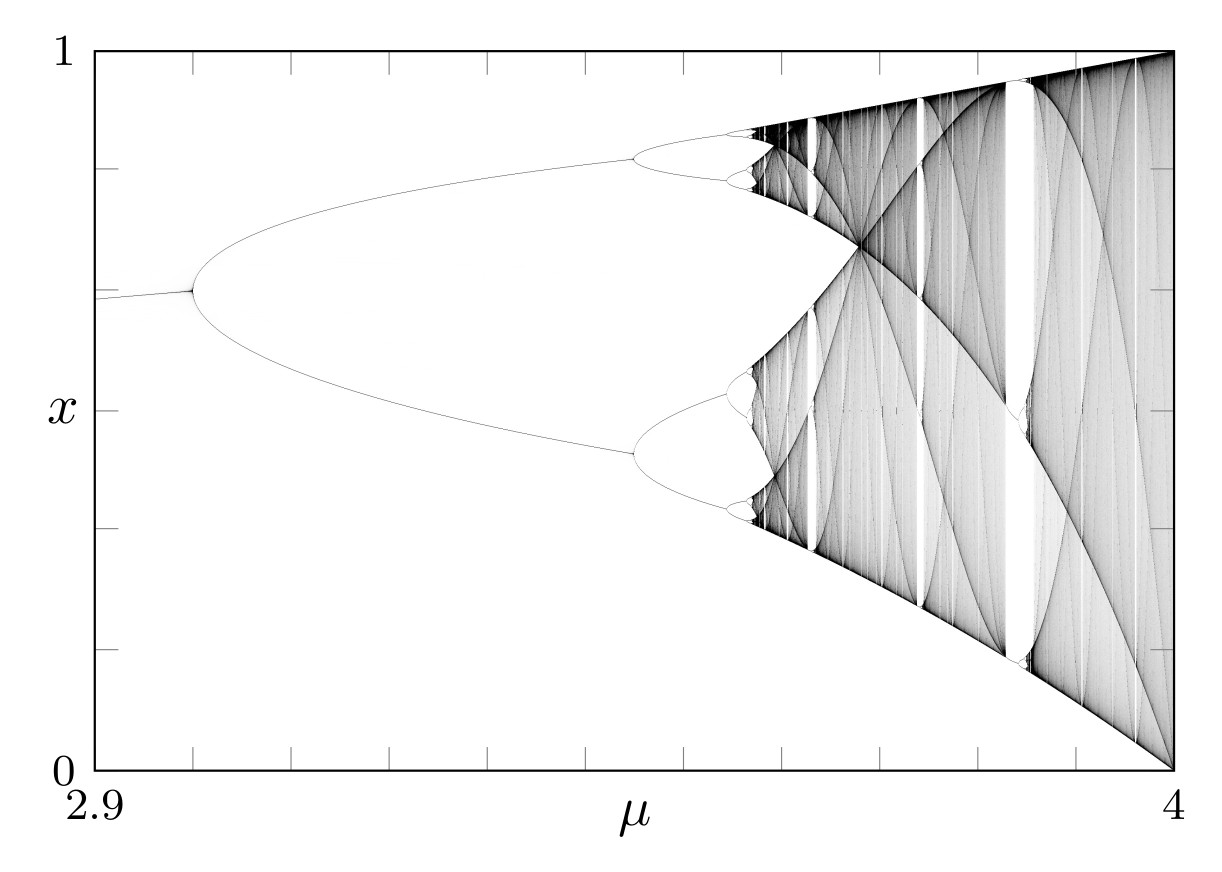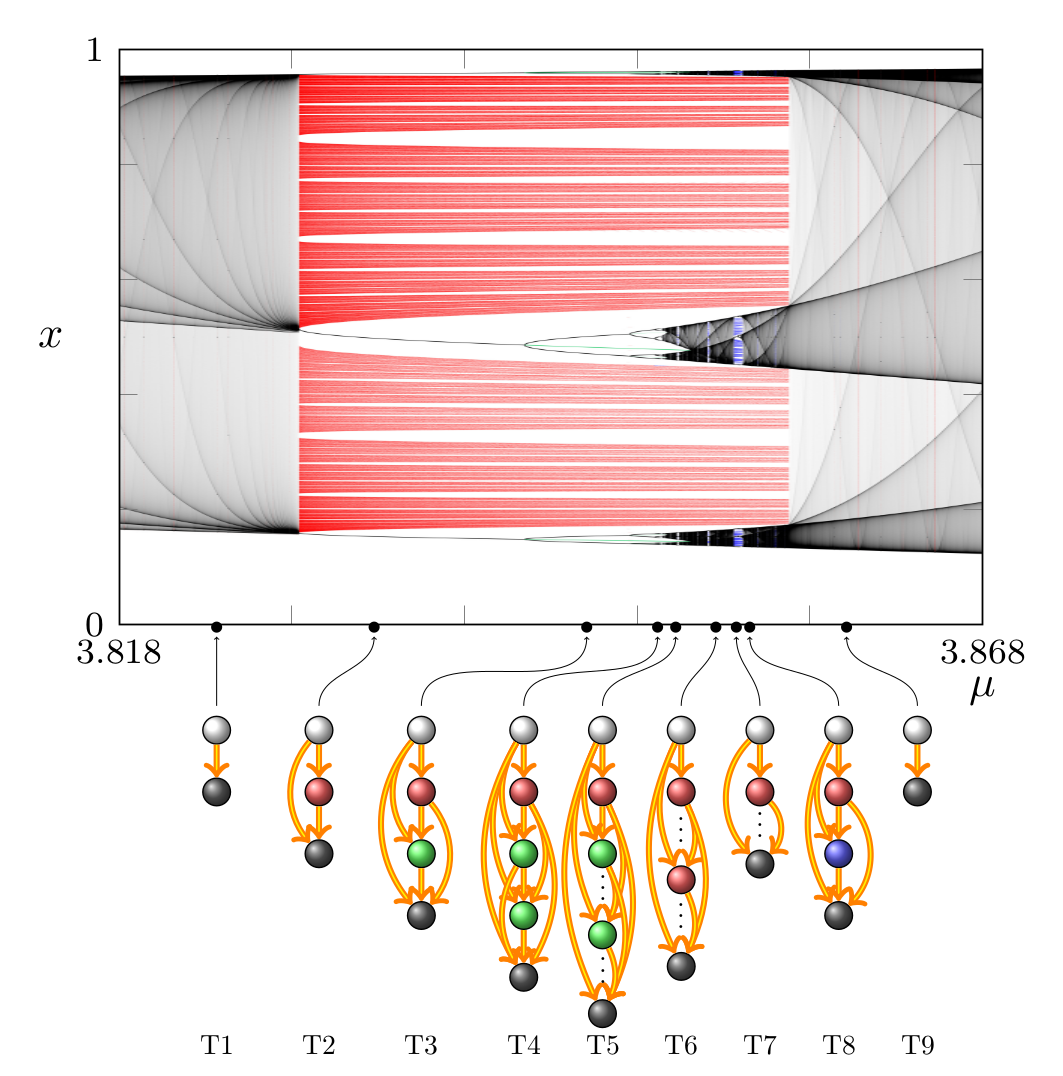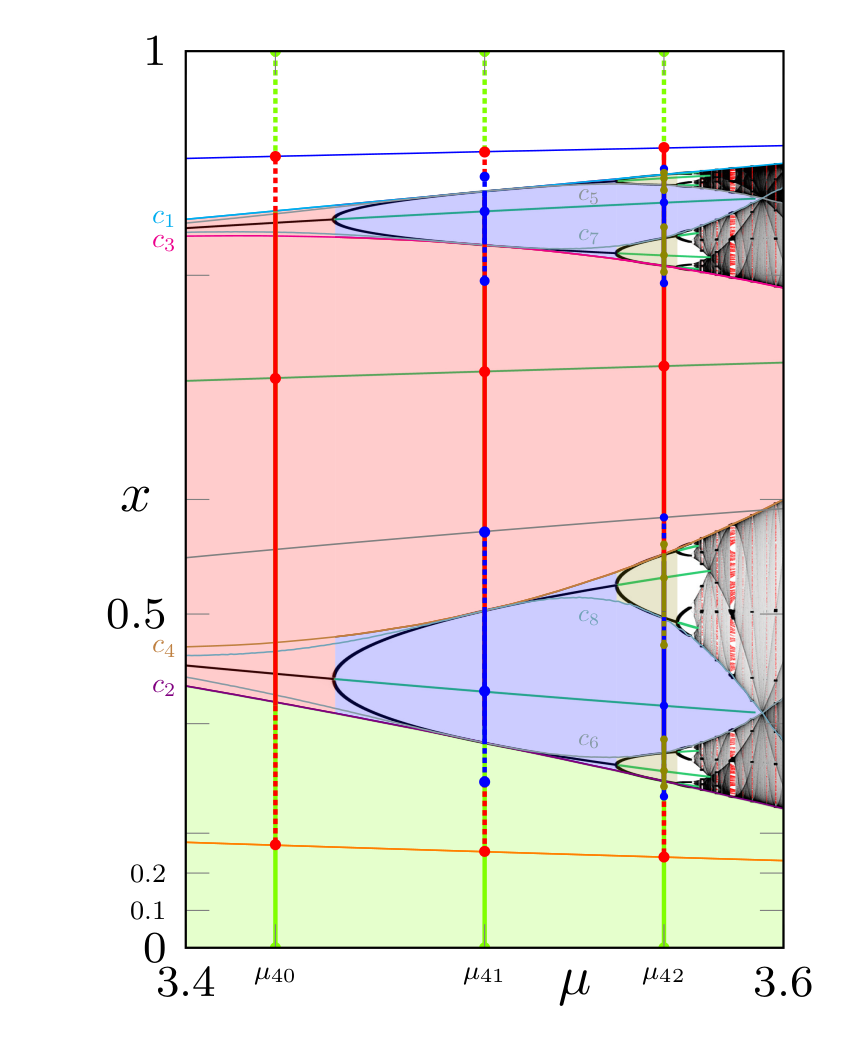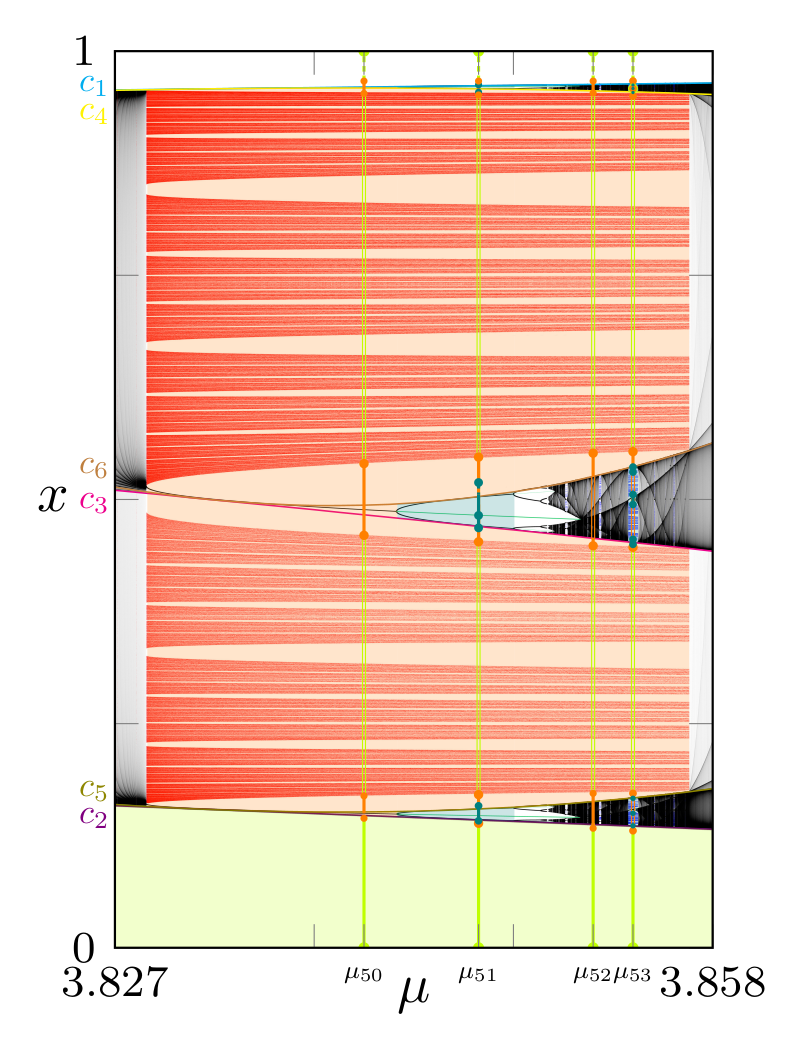Press ? for presentation controls.
Best viewed in Firefox,
Chrome and
Opera.
Dynamics of
the Logistic map
Joint work with Jim Yorke
Howard University
Washington, DC (USA)
The logistic map

|
|
Bifurcation diagram of the logistic map
- Periodic orbit
- Feigenbaum attractor
- Cycle of intervals (chaotic)
- Beginning of a window
- End of a window

Bifurcation diagram of the logistic map
Periodic orbit Cantor set
(subshift of finite type)

L. Jonker
D. Rand
S. van Strien
J. Guckenheimer
M. Lyubich
A. Blokh
+
C. Conley
The period-3 window of the logistic map

Theorem [Conley '76, Norton '95]
Each discrete dynamical system $f:X\to X$ on a compact metric space $X$
has a Lyapunov function.
or
Theorem [J. Yorke & RdL, 2021]
The graph of the logistic map is a tower,
namely there is an edge
between each pair of nodes.
Projection of the bifurcation diagram
of the Poincaré map of the Lorenz system

A window of the Poincaré map
of the Lorenz system

Backward asymptotics in the Logistic map

Backward asymptotics in the Logistic map

Backward asymptotics in the Logistic map

Backward asymptotics in the Logistic map

Discrete & Continuous Dynamical Systems, 41:11 (2021) Jim Yorke, RdL, "Infinite towers in the graphs of many dynamical systems",
Nonlinear Dynamics, 105 (2021)